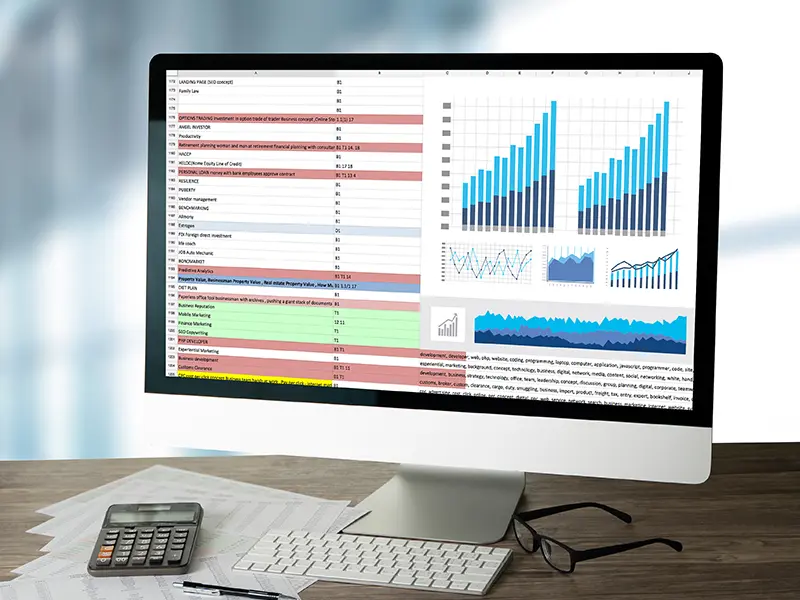Are you ready to unlock the mysteries of financial statements and dive into the world of accounting terms? Understanding balance sheets and income statements might initially seem daunting, but fear not! In this blog post, we are here to simplify these concepts. Whether you’re a business owner wanting to make informed decisions or just curious about how companies track their finances, buckle up as we decode balance sheets and income statements in a way that’s easy to digest. Let’s demystify the numbers together!
Understanding Financial Statements
Financial statements are the heartbeat of a company’s financial health, providing valuable insights into its performance and stability. These documents serve as a roadmap for investors, creditors, and stakeholders to assess the business’s viability.
Balance sheets offer a snapshot of a company’s assets, liabilities, and equity at a specific time. They showcase what the company owns versus what it owes—essentially painting a picture of its financial position.
On the other hand, income statements detail the revenues earned and expenses incurred over a set period. This report showcases whether the company is generating profits or facing losses during that timeframe.
Together, balance sheets and income statements provide essential information for decision-making processes. Understanding these financial statements thoroughly can provide valuable insights into an organization’s economic performance.
The Importance of Balance Sheets and Income Statements
Understanding the importance of balance sheets and income statements is crucial for any business owner or investor. These financial documents provide valuable insights into a company’s financial health, performance, and overall standing in the market.
Balance sheets offer a snapshot of a company’s assets, liabilities, and equity at a specific time. They help stakeholders understand how well a company can meet its short-term and long-term obligations while assessing its financial stability.
On the other hand, income statements showcase a company’s revenues, expenses, and profits over time. By analyzing this document, investors can evaluate a business’s operational efficiency and identify potential areas for improvement or growth opportunities.
Balance sheets and income statements comprehensively depict an organization’s financial position. By studying these documents carefully, decision-makers can make informed choices that drive sustainable growth and success in the competitive business landscape.
Key Components of a Balance Sheet
The balance sheet is key to understanding a company’s financial health. It provides a snapshot of the company’s assets, liabilities, and equity at a specific time.
Assets are what the company owns and include items like cash, inventory, and property. Liabilities are what the company owes, such as loans or accounts payable. Equity represents the owner’s stake in the business.
Key components of a balance sheet include current assets (like cash or accounts receivable), non-current assets (such as property or equipment), current liabilities (like short-term debt), non-current liabilities (long-term debt), and shareholder’s equity.
Analyzing these components can give insight into how well a company manages its resources and finances. Understanding these key elements allows investors and stakeholders to assess financial stability and make informed decisions about the organization’s prospects.
Analyzing an Income Statement
Examining the numbers and understanding what they represent is essential when analyzing an income statement. The income statement provides a snapshot of a company’s financial performance over a specific period, showing revenue, expenses, and net profit or loss.
One key aspect is the top-line revenue figure, which reflects the total money generated from sales. Understanding the sources of revenue can give insights into a company’s core business activities and how well they are performing.
On the flip side, looking at expenses is crucial as well. This includes operating expenses, cost of goods sold (COGS), taxes, interest payments, etc. Analyzing these expenses can reveal where a company is allocating its resources and identify areas for potential improvement or optimization.
Interpreting an income statement involves comparing line items year-over-year or against industry benchmarks to gauge financial health and profitability trends effectively.
Common Accounting Terms and Definitions
When entering the accounting world, you may first encounter terms that seem like a foreign language. Let’s break down some common accounting terms to help demystify the jargon.
First, let’s discuss “assets.” These are resources a company owns that hold economic value, such as cash, inventory, or property.
Next, “liabilities” represent the company’s financial obligations or debts. This can include loans, accounts payable, and accrued expenses.
“Revenue” refers to the income generated from business activities. It is essential for measuring a company’s performance over a specific period.
Conversely, “expenses” encompass costs incurred in running the business. These can range from salaries and utilities to marketing and rent.
Understanding these terms will empower you to interpret financial statements with confidence.
Tips for Reading and Interpreting Financial Statements
A few key tips can help you navigate the numbers confidently when reading and interpreting financial statements. Start by understanding the purpose of each statement – the balance sheet provides a snapshot of the company’s financial position at a specific time. In contrast, the income statement shows its profitability over a period.
Next, pay attention to trends and comparisons. Look for changes in figures over time or compare them to industry benchmarks to gain deeper insights into performance. It’s also important to analyze ratios like liquidity, profitability, and leverage ratios as they can reveal crucial information about the company’s financial health.
Furthermore, remember to read the footnotes accompanying the statements. They often contain essential information that can clarify certain figures or provide context for unusual entries. Seek professional advice when interpreting complex financial data accurately and making informed decisions based on your analysis.
Conclusion: How to Utilize Balance Sheets and Income Statements in Decision Making
Mastering the art of decoding balance sheets and income statements can provide valuable insights into a company’s financial health. By understanding key components, analyzing trends, and familiarizing yourself with common accounting terms, you can make informed decisions that drive business success.
Balance sheets offer a snapshot of a company’s assets, liabilities, and equity at a specific time. Income statements show profitability over a period by detailing revenues and expenses. Comparing these two statements can help assess an organization’s financial performance and stability.
When interpreting financial statements, pay attention to liquidity ratios, profitability margins, leverage ratios, and efficiency metrics. These indicators help evaluate operational efficiency, growth potential, risk management strategies, and financial viability.
Utilizing balance sheets and income statements effectively empowers decision-makers to allocate resources wisely, identify areas for improvement or investment opportunities, and mitigate risks. With a solid grasp of these essential documents’ accounting terms and concepts, making sound strategic choices becomes less daunting yet more effective in achieving sustainable growth for your business endeavors.




